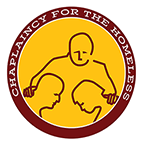
There is a growing number of homeless individuals in Maricopa County. According to the City of Phoenix website as of 11/18/2017:
Although the total number of people experiencing homelessness has remained relatively consistent over the last several years, the number of persons living unsheltered has increased by 59% between 2015 and 2017. (phoenix.gov/phxcares)
According to a study conducted in 2013, the homeless demographics looked like this:
- There were 57,849 homeless veterans recorded in 2013, and 40% were unsheltered. But that population has also declined in recent years.
- Among persons in homeless families, 58% were children (130,515).
- The new age-related data obtained by the 2013 report reveals striking problems among youth: “There were 46,924 unaccompanied homeless children and youth on a single night in 2013. Most (87% or 40,727) were youth between the ages of 18 and 24, and 13% (or 6,197) were children under the age of 18. Half of unaccompanied children and youth (23,461 or 50%) were unsheltered in 2013.” (This population is very difficult to count with any accuracy; see this Urban Institute brief on the issue.)
- The national trends can hide significant regional variation: “20 states experienced increases in homelessness between 2012 and 2013. New York experienced the largest increase (7,864 people), followed by California (5,928 people). Other states with large increases include South Carolina (1,629), Massachusetts (1,528), and Maine (623).” (Read the full article HERE)
Not separated out in the above demographics is the number who are seriously mentally ill. According to a report by the Treatment Advocacy center (2014):
- Approximately 33 percent of the homeless are individuals with serious mental illnesses that are untreated;
- Many of these people suffer from schizophrenia, schizoaffective disorder, bipolar disorder or major depression;
- The homeless population has increased steadily in cities and small towns since the 1970s;
- In Massachusetts and Ohio, 27 and 36 percent of people released from mental institutions became homeless within 6 months;
- Previously hospitalized people were three times more likely to obtain food from the garbage;
- Studies show that psychotic individuals are much more likely to get assaulted or threatened while homeless.
Another demographic not noted above is the number of homeless persons suffer from addiction issues. Recent statistics are difficult to find, however, the Substance Abuse and Mental Health Services Administration (2003) estimates, 38% of homeless people were dependent on alcohol and 26% abused other drugs.
Numbers, numbers, numbers….
Who do these numbers represent?
They represent people who sons and daughters. When we see a homeless person, we should remind ourselves; “He is someone’s son; she is someone’s daughter.”
In some cases, these numbers represent a failure in our society to provide for the most vulnerable among us. This is particularly true of the homeless who suffer from mental illness. Anything we can to advocate for these individuals is encouraged.
They represent “the least of these” who Jesus instructed us to reach out to (Matthew 25:40).
They are among “the world”: “For God so loved the world,[a] that he gave his only Son, that whoever believes in him should not perish but have eternal life” (John 3:16, English Standard Version).
They represent us and remind us – we too are homeless. We may have a home to go each night, yet, our restless souls only find rest in the home of our Heavenly Father.

